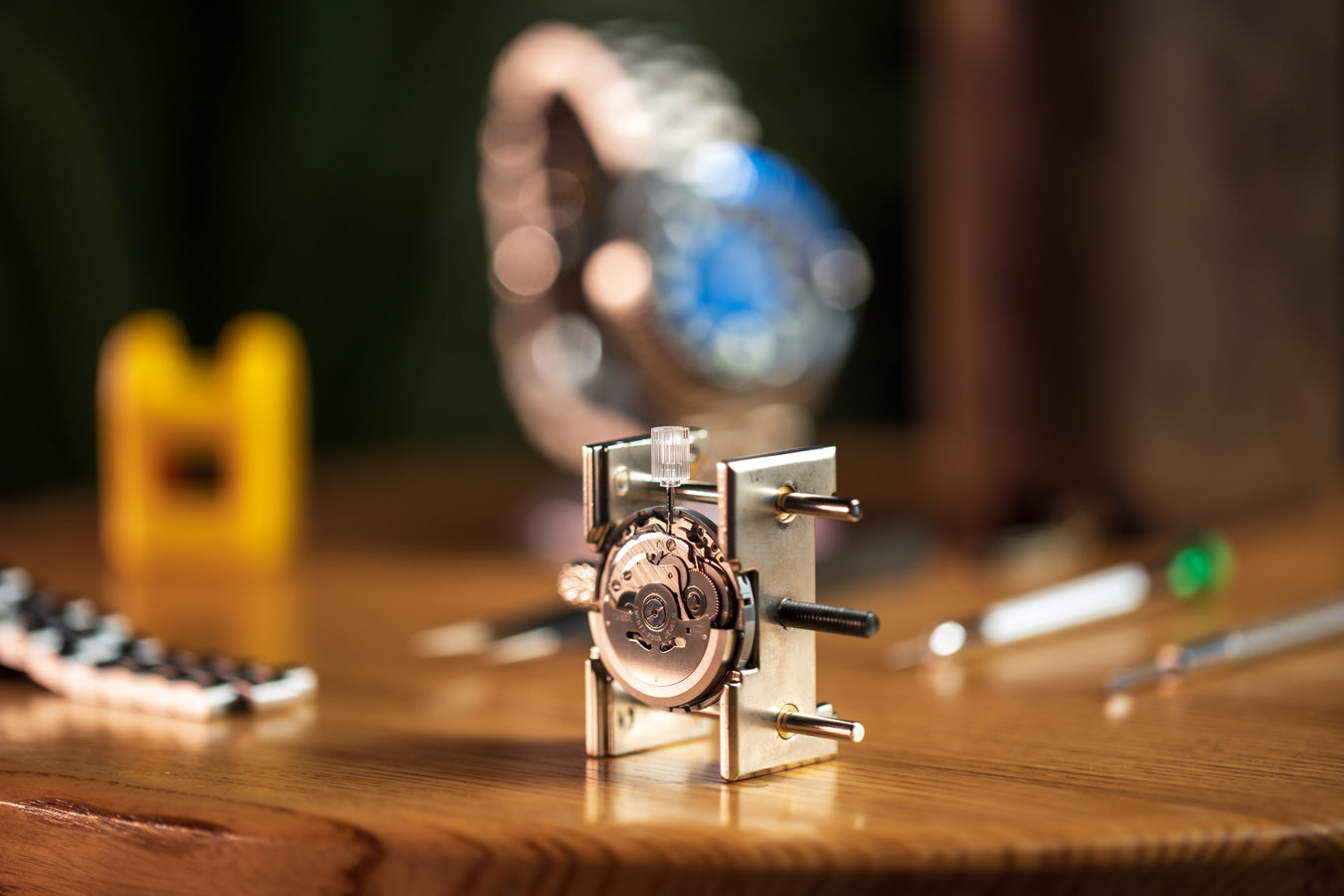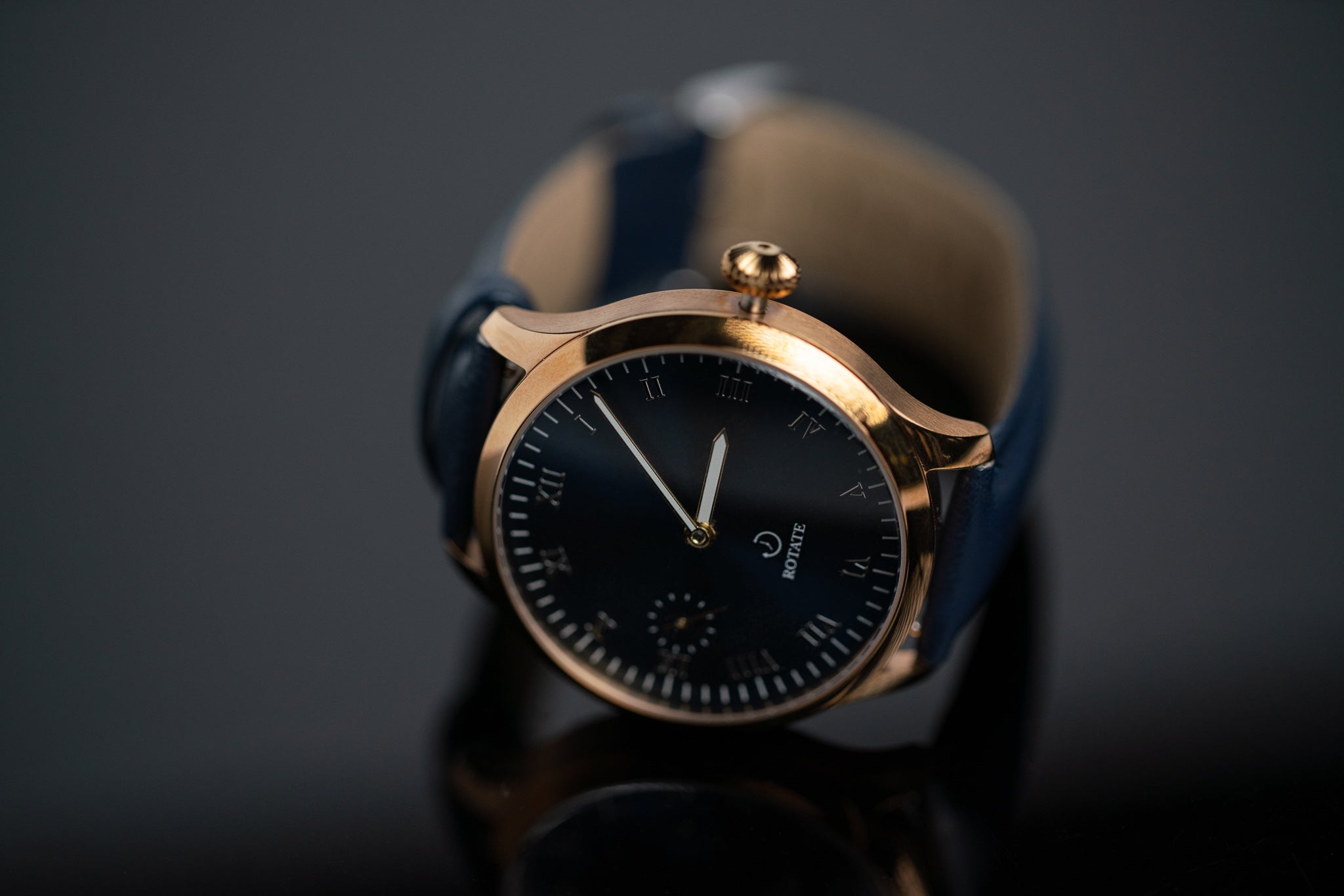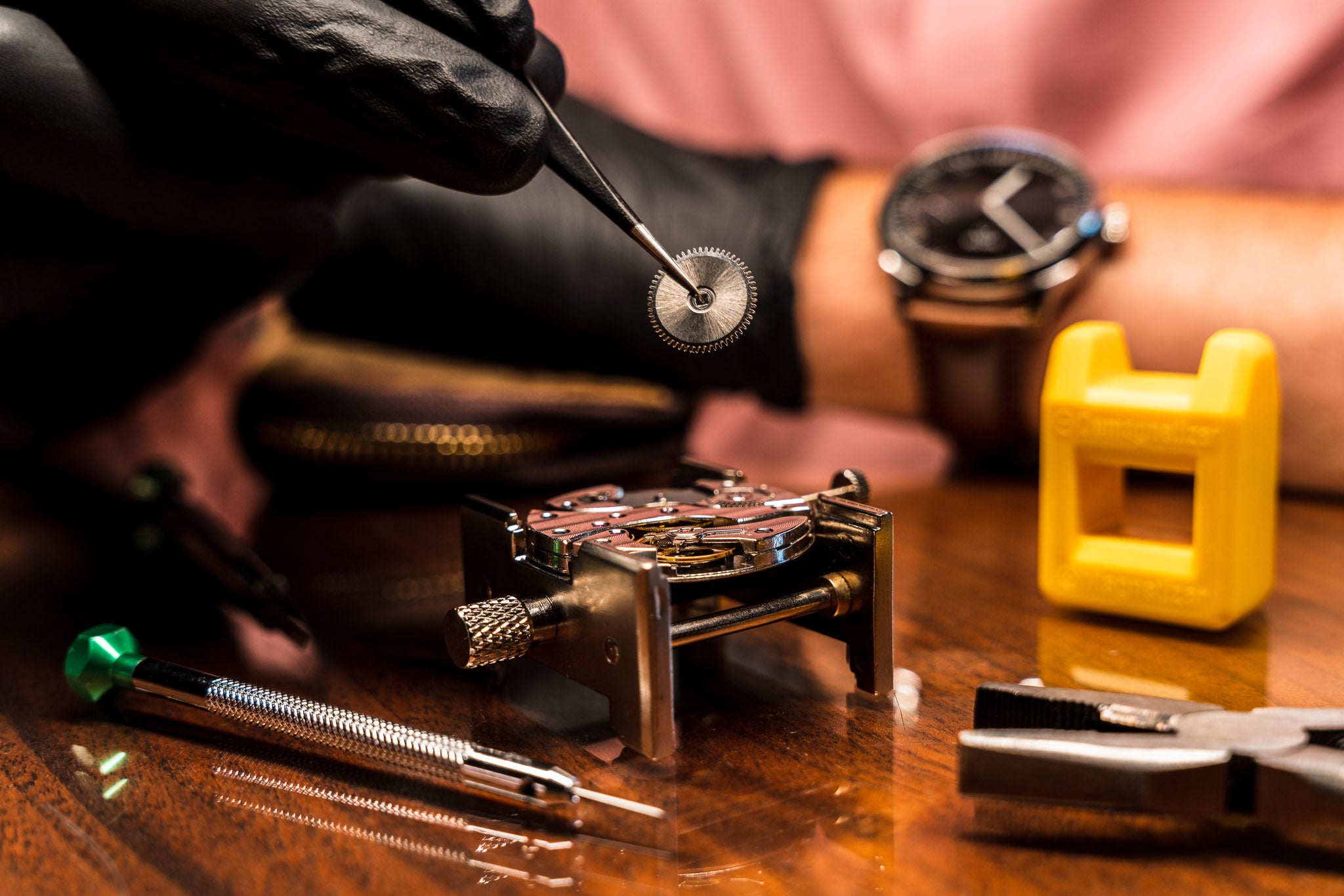
A Brief History of Automatic Watches
In the realm of timekeeping marvels, automatic watches stand as a testament to the ingenious fusion of mechanics and innovation. Embark on a journey through time with us as we unveil the fascinating evolution of automatic watches, an ingenious creation that effortlessly marries craftsmanship and convenience.
**Early Concepts: The Quest for Self-Winding**
The seeds of self-winding watches were sown centuries ago. Horologists of old dreamt of timepieces that could wind themselves, eliminating the need for manual winding. The 18th century witnessed the first attempts at creating self-winding mechanisms, a concept that would eventually blossom into the automatic watch.
**The Invention of the Rotor: A Leap Forward**
The early 20th century marked a turning point with the invention of the rotor system. Abraham-Louis Perrelet's creation harnessed the motion of the wearer's wrist to power the winding mechanism. This pivotal innovation laid the foundation for what would become the automatic watch we know today.
**The Rolex Oyster Perpetual: Pioneering Excellence**
The 1930s saw the emergence of the iconic Rolex Oyster Perpetual, a watch that combined a self-winding mechanism with a hermetically sealed case. This innovation, designed to withstand water and dust, set the stage for the mass production of automatic watches that could endure the rigors of daily life.
**The Swing of Progress: Advances in Movement Design**
The mid-20th century witnessed rapid advancements in automatic movement design. Innovations like the bidirectional winding system and the introduction of ball bearings to reduce friction propelled automatic watches into the mainstream. Brands across the horological spectrum embraced the elegance and convenience of self-winding timepieces.
**The Quartz Crisis and Resurgence**
The advent of quartz technology in the 1970s brought about a seismic shift in the watch industry. However, automatic watches persevered, cherished by enthusiasts who admired the intricacies of mechanical craftsmanship. The 21st century witnessed a renaissance as automatic watches reclaimed their status as symbols of timeless elegance.
**Modern Marvels: The Marriage of Tradition and Technology**
Today, automatic watches continue to enchant watch aficionados and novices alike. Brands like Rotate Watches are at the forefront of this revival, offering automatic watch kits that empower enthusiasts to assemble their own self-winding timepieces. The blend of tradition and modernity bridges the gap between craftsmanship and customization.
**Embrace the Magic: Building Your Own Automatic Watch**
The journey of the automatic watch is a captivating tale of ingenuity and craftsmanship. As you immerse yourself in the art of building your own automatic timepiece with Rotate Watches' kits, you become part of a legacy that spans centuries. The gentle rotation of the wrist brings life to the intricate movements within, a dance between tradition and innovation that continues to captivate hearts and minds across generations.
At Rotate Watches, we celebrate the enduring allure of automatic watches, inviting you to step into the realm of horological excellence. Join us in embracing the magic of self-winding timepieces, a journey that honors the past while embracing the future.
**Early Concepts: The Quest for Self-Winding**
The seeds of self-winding watches were sown centuries ago. Horologists of old dreamt of timepieces that could wind themselves, eliminating the need for manual winding. The 18th century witnessed the first attempts at creating self-winding mechanisms, a concept that would eventually blossom into the automatic watch.
**The Invention of the Rotor: A Leap Forward**
The early 20th century marked a turning point with the invention of the rotor system. Abraham-Louis Perrelet's creation harnessed the motion of the wearer's wrist to power the winding mechanism. This pivotal innovation laid the foundation for what would become the automatic watch we know today.
**The Rolex Oyster Perpetual: Pioneering Excellence**
The 1930s saw the emergence of the iconic Rolex Oyster Perpetual, a watch that combined a self-winding mechanism with a hermetically sealed case. This innovation, designed to withstand water and dust, set the stage for the mass production of automatic watches that could endure the rigors of daily life.
**The Swing of Progress: Advances in Movement Design**
The mid-20th century witnessed rapid advancements in automatic movement design. Innovations like the bidirectional winding system and the introduction of ball bearings to reduce friction propelled automatic watches into the mainstream. Brands across the horological spectrum embraced the elegance and convenience of self-winding timepieces.
**The Quartz Crisis and Resurgence**
The advent of quartz technology in the 1970s brought about a seismic shift in the watch industry. However, automatic watches persevered, cherished by enthusiasts who admired the intricacies of mechanical craftsmanship. The 21st century witnessed a renaissance as automatic watches reclaimed their status as symbols of timeless elegance.
**Modern Marvels: The Marriage of Tradition and Technology**
Today, automatic watches continue to enchant watch aficionados and novices alike. Brands like Rotate Watches are at the forefront of this revival, offering automatic watch kits that empower enthusiasts to assemble their own self-winding timepieces. The blend of tradition and modernity bridges the gap between craftsmanship and customization.
**Embrace the Magic: Building Your Own Automatic Watch**
The journey of the automatic watch is a captivating tale of ingenuity and craftsmanship. As you immerse yourself in the art of building your own automatic timepiece with Rotate Watches' kits, you become part of a legacy that spans centuries. The gentle rotation of the wrist brings life to the intricate movements within, a dance between tradition and innovation that continues to captivate hearts and minds across generations.
At Rotate Watches, we celebrate the enduring allure of automatic watches, inviting you to step into the realm of horological excellence. Join us in embracing the magic of self-winding timepieces, a journey that honors the past while embracing the future.



